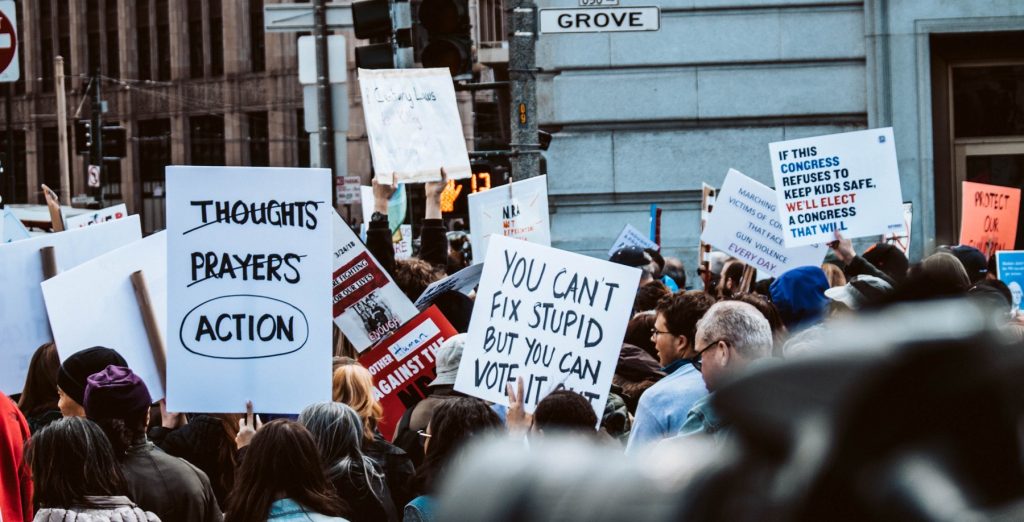(Newswise) — A new report from the Johns Hopkins Center for Gun Violence Solutions analyzing 2021 Centers for Disease Control and Prevention data reveals another record year for firearm fatalities.
The 48,830 lives lost to firearms in 2021—the second year of the pandemic—is the highest number on record. Both firearm homicides and suicides reached record highs, with over of these deaths attributed to suicide, equaling the highest increase in four decades.
Black people in the U.S. were nearly 14 times more likely to die by gun homicide than those who are white. Young Black males ages 15–34 were most at risk, accounting for 36 percent of all gun homicides in 2021, though representing only two percent of the total U.S. population. Even more distressing, guns were responsible for 51 percent of all deaths of Black teens ages 15–19.
The Johns Hopkins Center for Gun Violence research used CDC data that became publicly available this past January to analyze 2021 firearm fatalities across age, sex, race, and place. The report, U.S. Gun Violence in 2021: An Accounting of a Public Health Crisis, is thought to be the most comprehensive analysis of the CDC’s 2021 firearm data to date.

A growing momentum to prevent gun violence has for decades been blocked by NRA lobbyists, which provoked the Dickey amendment and drastic funding cuts after a 1993 landmark study concluded having a gun in the home tripled the risk of homicide and increased the risk of suicide by five times, KERA reports. Though Congress passed a bill in 2018, which allowed the CDC to resume gun-related studies, funding has been limited up until 2020, when the Federal budget called for $25 million in gun violence related research, they report.
The report comes at a time of heightened concern about gun violence in the U.S. as mass shootings and other interpersonal gun violence continue to occur across the country. The report also includes evidence-based policy recommendations aimed at curtailing firearm deaths.
The authors note that an estimated 9,500 fewer people would have died in 2021 if the firearm homicide rate had not risen after 2014, after reaching a 40-year low.
“Our country is breaking records for all the wrong reasons—record gun sales combined with increasingly permissive gun laws are making gun violence a pervasive part of life in our country, leading to a sharp increase in gun deaths,” says Ari Davis, MPP, policy adviser at the Johns Hopkins Center for Gun Violence Solutions and the report’s lead author. “Perhaps most troubling is these spikes in homicides and suicides are almost entirely connected to guns.”
In 2021, guns continued to be the leading cause of death for children and teens ages 1–19 as well as young adults under the age of 25. In fact, young people ages 15–34 had a gun homicide rate twice the national average, accounting for three out of every five homicide deaths. This was driven by the high rate of firearm fatalities among Black people in these age groups.
For gun suicides in 2021, white males, who comprised 29 percent of the population, accounted for 70 percent of all firearm suicide deaths, while surprisingly, those 75 and older were at the highest risk.
The researchers analyzed 2021 firearm data from 2019 to 2021 collected by the CDC’s Wide-ranging Online Data for Epidemiologic Research (WONDER) database, considered to be the most reliable national source of gun death data available in the U.S. The data, based on death certificates, reflect the primary cause of death.
In the first two years of the pandemic, guns drove suicide and homicide rates in the U.S., increasing homicides by 45 percent, and non-gun homicides by 7 percent. Black and Hispanic/Latinos experienced drastic increases in gun homicides over these two years, while American Indian/Alaska Natives experienced the largest suicide increases, up 55 percent. Similarly, the Black population experienced an increase of 38 percent over these two years.
The report emphasizes that effective gun violence prevention laws can help reduce gun violence. In state-to-state comparisons, the authors found that the highest gun-related death rates tended to be in states with weaker gun laws and higher rates of gun ownership, while gun-related death rates were lower where gun violence prevention laws were stronger. In 2021, a person living in Mississippi was ten times more likely to die by gun violence than someone living in Massachusetts.
The report recommends evidence-based policies to address gun violence including:
• Implementing permit-to-purchase laws, also known as gun purchaser licensing.
• Using Domestic Violence Protection Orders and Extreme Risk Protection Orders—sometimes called “red flag” laws—to temporarily remove firearms from individuals determined to be at elevated risk for violence.
• Investing in community violence intervention programs.
• Adopting child access prevention laws mandating safe firearm storage in households with children and/or teens.
• Enacting stronger concealed carry permitting laws; and repealing “stand-your-ground” laws.
“Each life lost to gun violence represents a family torn apart, a community suffering,” says Cassandra Crifasi, PhD, co-director of the Johns Hopkins Center for Gun Violence Solutions and a report co-author. “The data are clear that states with stronger gun violence prevention laws have lower rates of gun violence. Passage of evidence-based solutions would help end the needless suffering happening in all corners of our country.”
“U.S. Gun Violence in 2021: An Accounting of a Public Health Crisis” was written by Ari Davis, Rose Kim, and Cassandra Crifasi, with contributions from Lisa Geller, Silvia Villarreal, and Tim Carey.




